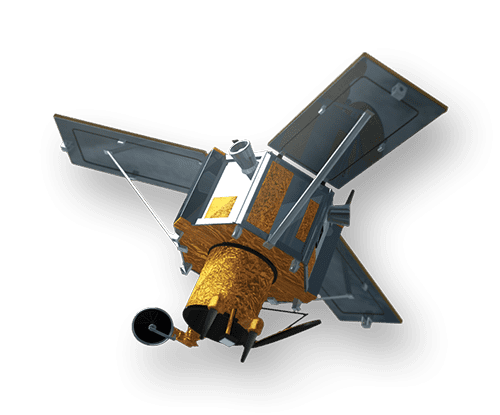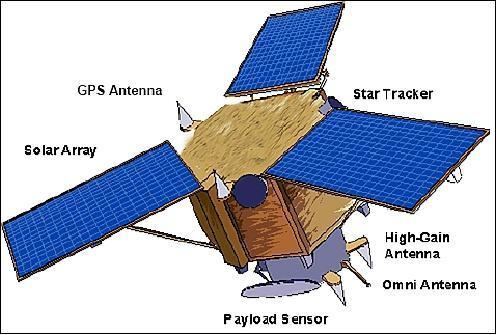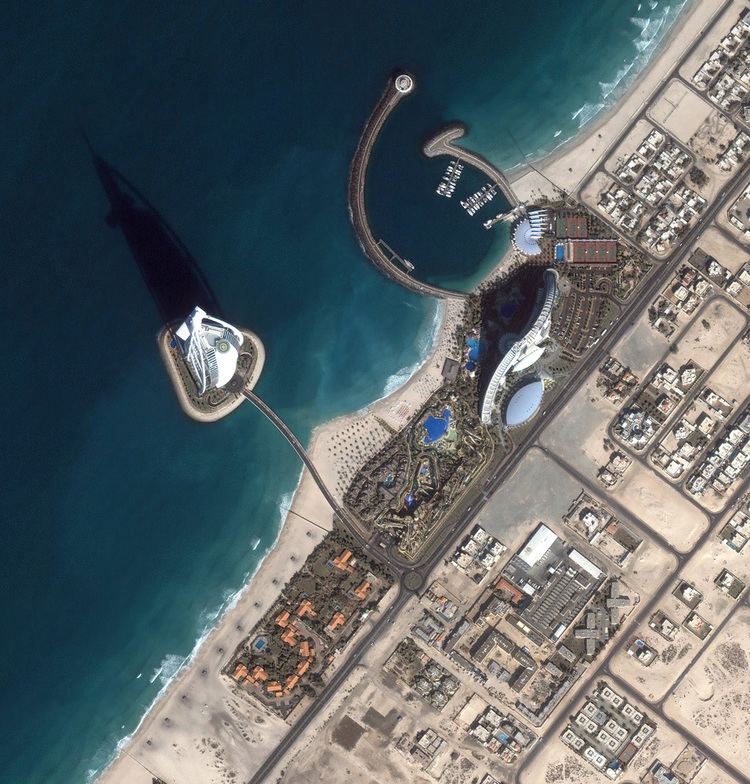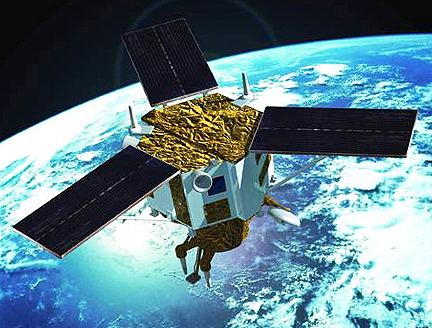SATCAT no. 25919 Launch date 24 September 1999 Period 1.6 hours Inclination 98.2° | COSPAR ID 1999-051A Bus LM-900 Orbit height 681 km Speed on orbit 7.5 km/s | |
 | ||
Mission duration Final: 15 years, 6 months, 6 days Manufacturer Lockheed Martin Space Systems Similar QuickBird, WorldView‑2, GeoEye‑1, WorldView‑1, Advanced Land Obs | ||
IKONOS is a commercial Earth observation satellite, and was the first to collect publicly available high-resolution imagery at 1- and 4-meter resolution. It offers multispectral (MS) and panchromatic (PAN) imagery. The IKONOS launch was called “one of the most significant developments in the history of the space age”. IKONOS imagery began being sold on 1 January 2000.
Contents
- The ikonos satellite as handled by the munich receiving centre
- History
- Spacecraft
- Communications
- Optics Detectors
- Spatial resolution
- Temporal resolution
- Radiometric resolution
- Swath
- References

It derived its name from the Greek term eikōn for image.
The ikonos satellite as handled by the munich receiving centre
History

IKONOS was originated under the Lockheed Corporation as the Commercial Remote Sensing System (CRSS) satellite. In April 1994 Lockheed was granted one of the first licenses from the U.S. Department of Commerce for commercial satellite high-resolution imagery. On 25 October 1995 partner company Space Imaging received a license from the Federal Communications Commission (FCC) to transmit telemetry from the satellite in the eight-gigahertz Earth Exploration Satellite Services band. Prior to launch, Space Imaging changed the name of the satellite system to IKONOS. The name comes from the Greek word for "image".

Two satellites were originally planned for operation. IKONOS-1 was launched on 27 April 1999 at 18:22 UTC from Vandenberg Air Force Base SLC-6, but Athena II rocket's payload fairing did not separate due to an electrical malfunction, resulting in the satellite failing to reach orbit and falling into the atmosphere over the South Pacific Ocean.

IKONOS-2 was built in parallel with and as an identical twin to IKONOS-1. Completion of its construction was projected for July 1999 with a January 2000 launch. In reaction to the loss of IKONOS-1, the spacecraft was renamed IKONOS and its processing accelerated, resulting in a launch on 24 September 1999 at 18:22 UTC, also from Vandenberg aboard an Athena II rocket. IKONOS has a mass of 817 kilograms (1,800 lb) and operates in a Sun-synchronous, near-polar, circular 681 km (423 mi) orbit. It has five imaging sensors, one panchromatic and four multispectral (blue, green, red, and near-infrared), and has a nadir image swath width of 11.3 km (7 mi).

In December 2000, IKONOS received the "Best of What's New" Grant Award in Aviation & Space from Popular Science magazine. The acquisition of Space Imaging and its assets by Orbimage was announced in September 2005 and finalized in January 2006. The merged company was renamed GeoEye, which was itself acquired by DigitalGlobe in January 2013. DigitalGlobe operated IKONOS until its retirement on 31 March 2015.
Spacecraft

IKONOS is a three-axis stabilized spacecraft designed by Lockheed Martin. The design later became known as the LM900 satellite bus system. The satellite's altitude is measured by two star trackers and a sun sensor and controlled by four reaction wheels; location knowledge is provided by a GPS receiver. The design life is seven years; S/C body size=1.83 m × 1.57 m (hexagonal configuration); S/C mass = 817 kg; power = 1.5 kW provided by three solar panels.
The LM900 spacecraft is a three-axis stabilized bus that is designed to carry scientific payloads in LEOs. It provides precision pointing on an ultra stable highly agile platform. Payloads for a variety of scientific and remote sensing applications may be accommodated including laser sensors, imagers, radar sensors, electro-optical and astronomical sensors, as well as planetary sensors. The LM900 bus shares a hardware heritage with Iridium, which is the basis for the LM700 bus.
Communications
IKONOS conducts telemetry, tracking and control in the 8345.968–8346.032 MHz band (downlink) and 2025–2110 MHz band (uplink). Downlink data carrier operates in the 8025-8345 MHz band.
Optics & Detectors
IKONOS has a primary mirror aperture of 0.7 m (2.3 feet), and a folded optical focal length of 10 m (about 33 feet) using 5 mirrors. The main mirror features a honeycomb design to reduce mass. The detectors at the focal plane include a pan-chromatic and a multi-spectral sensor, with 13500 pixels and 3375 pixels respectively (cross-track). Total instrument mass is 171 kg (377 pounds) and it uses 350 watts.
Spatial resolution
Spectral Resolution
Temporal resolution
The revisit rate for IKONOS is three to five days off-nadir and 144 days for true-nadir.
Radiometric resolution
The sensor collects data with an 11-bit (0–2047) sensitivity and are delivered in an unsigned 16-bit (0–65535) data format. From time-to-time the data are rescaled down to 8-bit (0–255) to decrease file size. When this occurs much of the sensitivity of the data needed by remote sensing scientists is lost.
Swath
11 km × 11 km (single scene)
